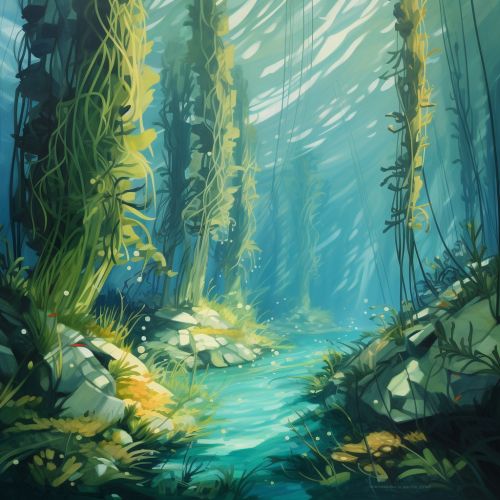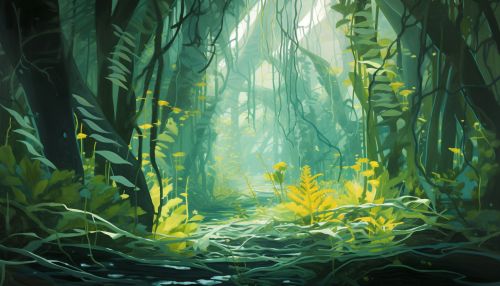The Ecology of Kelp Forests and Their Role in Coastal Ecosystems
Introduction
Kelp forests are underwater ecosystems formed in shallow water by the dense growth of several different species known as kelps. They are recognized as one of the most productive and dynamic ecosystems on Earth. Larger kelps are a type of seaweed that grows in "underwater forests" in clear, shallow oceans. Kelp forests occur worldwide throughout temperate and polar coastal oceans.
Ecology of Kelp Forests
Kelp forests are characterized by high biodiversity and the vertical structure they provide to the marine environment. They are home to many different species of fish, invertebrates, and marine mammals. Kelp forests also play a crucial role in the carbon cycle, acting as a significant carbon sink.
Species Diversity
Kelp forests are known for their high species diversity. They provide a three-dimensional structure and substrate that supports many other species of fish and invertebrates. The kelp itself is a type of brown algae, and there are several different species that can form a kelp forest, such as giant kelp, bull kelp, and elk kelp.
Role in Carbon Cycle
Kelp forests play a significant role in the global carbon cycle. They are highly productive, meaning they can absorb a large amount of carbon dioxide from the atmosphere through photosynthesis. This absorbed carbon is then stored in the kelp's biomass, which can be transported to the deep sea when the kelp dies, effectively sequestering the carbon.


Role in Coastal Ecosystems
Kelp forests play a crucial role in coastal ecosystems. They provide habitat and food for a multitude of marine species, and their presence can influence local marine biodiversity and productivity.
Habitat Provision
Kelp forests provide an important habitat for many marine species. The complex structure of the kelp provides shelter from predators and harsh environmental conditions. Many species of fish and invertebrates live in the kelp forest for their entire lives, while others only use it as a nursery ground.
Influence on Biodiversity and Productivity
The presence of a kelp forest can greatly influence local biodiversity and productivity. Kelp forests are often hotspots for marine biodiversity, supporting a greater number of species than surrounding habitats. They also contribute to local productivity by providing food and nutrients to other marine species.
Threats to Kelp Forests
Kelp forests face several threats, including climate change, overfishing, and pollution. These threats can lead to the loss of kelp forests, which can have cascading effects on the marine ecosystems they support.
Climate Change
Climate change is a significant threat to kelp forests. Rising ocean temperatures can lead to increased growth of invasive species that outcompete kelp. Additionally, ocean acidification can make it more difficult for kelp to absorb the nutrients they need to grow.
Overfishing
Overfishing can also threaten kelp forests. Many of the fish species that live in kelp forests are commercially valuable, and overfishing can lead to their decline. This can disrupt the balance of the ecosystem and lead to the loss of the kelp forest.
Pollution
Pollution, particularly nutrient pollution, can also threaten kelp forests. Excess nutrients in the water can lead to the growth of harmful algal blooms that block sunlight and make it difficult for kelp to grow.
Conservation of Kelp Forests
Conservation efforts for kelp forests focus on mitigating the threats they face and restoring damaged kelp forests. This can involve reducing greenhouse gas emissions, implementing sustainable fishing practices, and reducing nutrient pollution.
Reducing Greenhouse Gas Emissions
Reducing greenhouse gas emissions is crucial for mitigating the impacts of climate change on kelp forests. This can involve transitioning to renewable energy sources, improving energy efficiency, and implementing carbon capture and storage technologies.
Sustainable Fishing Practices
Implementing sustainable fishing practices can help to protect kelp forests from overfishing. This can involve setting catch limits, implementing no-take zones, and promoting the use of fishing gear that minimizes damage to the kelp forest.
Reducing Nutrient Pollution
Reducing nutrient pollution can help to protect kelp forests from harmful algal blooms. This can involve improving wastewater treatment, implementing agricultural best management practices, and promoting the use of fertilizers that release nutrients slowly.
